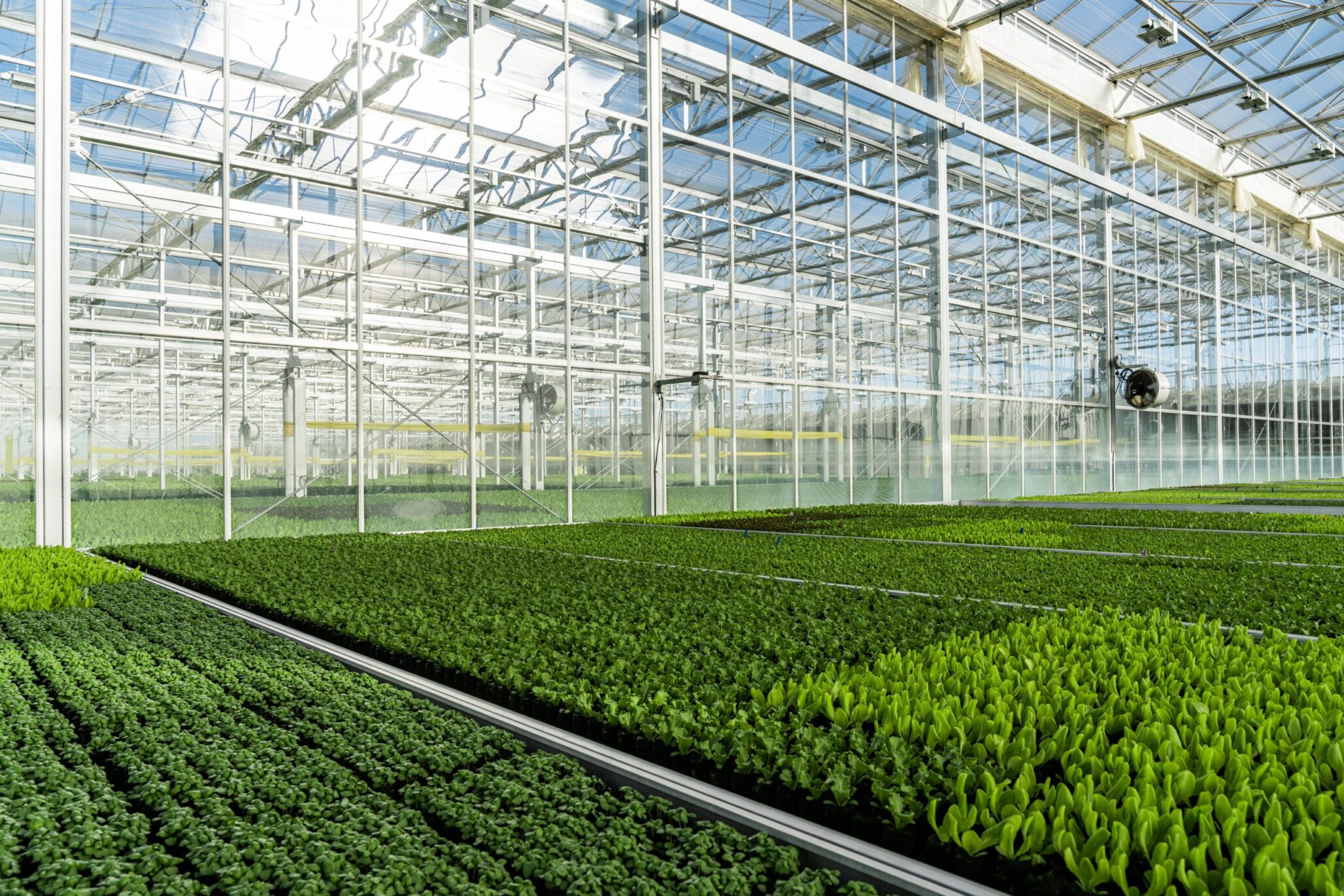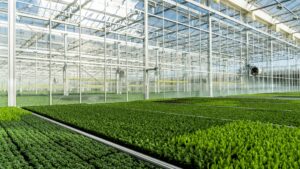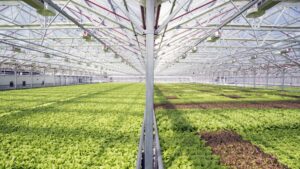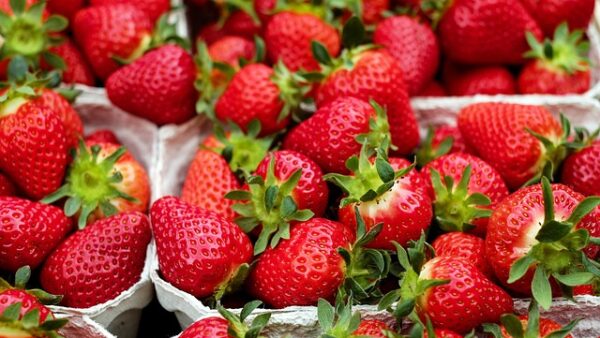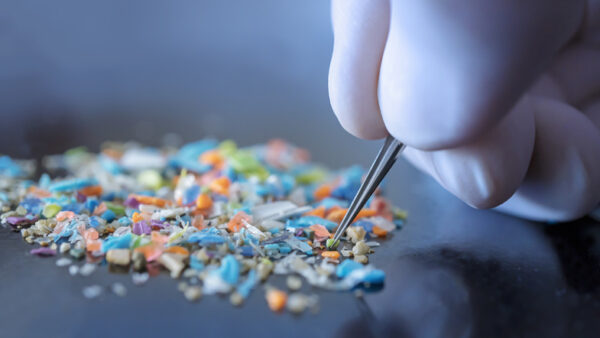The whole team at Seed World U.S. wishes you and yours the happiest of holidays. To celebrate the season, we’re bringing you the 12 Days of Christmas, Seed World style: 12 days of some of the most important stories of the year, both from Seed World U.S. and our sister publications: Seed World Europe, Seed World Canada, and Seed World LatAm. When you need a break from family and feasting, escape to some great reading right here.
On the 7th Day of Christmas, Seed World brings to you:
A Sneak Peek Inside Indoor Farming
Editor’s note: Indoor farming is unlikely to replace field-scale production anytime soon. Still, it offers opportunities to produce food in new and important ways and is super example of the innovation and technological improvement occurring across the seed industry. Indoor production gains are fascinating, both because of the new seed technologies leveraged and the management rethink required. What do you think is ahead for vertical farming?
Indoor Farming Provides a Solution to Global Hunger
To feed a growing global population, we need to look outside of the box, and that might mean we focus inside of the building.
Proponents say indoor farming offers a solution to sustainable food production problems, even unlocking the keys to growing food on Mars, but these are hefty goals that come with many challenges.
Eric Stein, executive director of the Center of Excellence for Indoor Agriculture and associate professor of Management Science and Information Systems at Penn State, says vertical operations have the harder road to success by far.
“Greenhouse growing is still indoors, but that technology is pretty much proven out and it’s growing faster. Those large farms can have 10, 20 or even 50 acres all under glass,” Stein says.
On the other hand, vertical growing operations are typically much smaller and harder to scale, sometimes 5,000 square feet or less.
“We’re still trying to develop the industry benchmarks to help farms understand how much labor, water and energy they’ll need to produce that head of lettuce. Those kinds of things have to be very closely managed if you want to be profitable in the long run,” Stein says.
Leading with Local
One of indoor farming’s strongest wins is in bringing vegetable production much closer to consumers.
Lettuce, for example, is often grown in Arizona or California and shipped approximately 3,000 miles to the East Coast.
“Since more than 98% of domestically grown leafy greens come from California and Arizona, by the time it reaches other markets, it has lost quality, taste, nutritional value, and shelf life,” says Viraj Puri, co-founder and CEO of Gotham Greens.
Decentralized production helps provide consistency of pricing and reduces carbon emissions from transportation across the country, but it also reduces food waste.
“We’ve all had the package of lettuce or strawberries in the back of the fridge that goes bad in what seems like just a few days. If we don’t have to ship those items for 10 days after harvesting, that’s more time consumers have to eat them at peak ripeness,” said David Nothmann, chief operating officer of Unfold.
Specialized Seeds
All those benefits start with the right seed.
“We’re building a predictive breeding platform that utilizes accelerated artificial intelligence and data analytics to help us produce new genetics for an indoor farming customer in a faster manner,” Nothmann says.
Unfold is currently focused on lettuce, spinach, tomato, pepper and cucumber, but plans for expanding to other crops are in the works as well. Yield is a requirement, but breeding can be differentiated by focusing on consumer-focused traits.
“There are only a certain number of traits we can focus on for a particular seed varietal. So, for example, in a controlled environment, we don’t need to use one of those trait slots on wind tolerance, which means we can now think more about crunch or flavor or color,” Nothmann says.
This helps indoor growers stand out, and in turn, earn a premium place in the market.
“We can concentrate on phytochemicals and create those designer plants with special colors or specific nutrient values. We’re going to see that more and more from these indoor farms,” Stein says.
In the summer of 2022, Seedway LLC, partnered with Sakata Seed America to form a new Controlled Environment Agriculture department. Frank Pennington, northern vegetable seed sales manager for Seedway, demand for indoor-specific seed will continue to grow.
“Seedway’s goal is to be able to provide the needed species and varieties that will perform well for our growers and help to make them profitable for many years to come,” Pennington says.
CEA sales representative and trial coordinator Evelyn Zaleski is working on developing a trialing plan for growers while working with seed suppliers to introduce new products in several different species including lettuce, greens, tomatoes, peppers and most-recently, cucumbers.
As this is still an emerging industry in the U.S., Pennington says many growers are working to understand the need for developing new varieties.
“The technology and products are being developed by seed suppliers currently to make sure that grower needs are being taken care of for the future. The growers are moving forward with new technology and the ability to control many steps of the growing process on these crops in these facilities,” Pennington says.
Government Regulations
Governments and municipalities are also working to understand the unique needs and benefits of indoor agriculture.
“There have been challenges as cities often have to change zoning laws and other policies to accommodate more facilities. When we first started, it was a big lift to get the proper zoning approvals, but as more indoor farming operations have popped up, we’ve seen more cities adapt and welcome them as a more sustainable food source,” Puri says.
There are also national regulations to consider. Puri currently serves on the USDA’s inaugural Federal Advisory Committee for Urban and Innovative Agriculture, which aims to address pressing challenges facing the U.S. food system and acts as a force for positive change in communities nationally.
“I am thrilled that this is a priority for key decision makers and hope to be able to help shape the future of indoor farming in our country,” Puri says.
A September 2022 ruling from the U.S. 9th Circuit Court of Appeals allows the USDA to grant organic certification to hydroponic crops, something that has been debated since the program began.
“This organic labeling is huge, because it’s a very effective way to get that higher price point. Consumers will pay those higher prices, and the indoor growers can offer price stability on long-term contracts because they are resilient to climate change and water supply issues,” Stein says.
But, when it comes to the future of indoor farming, there’s still a few things to continue building, including success metrics and scaling up production.
Read part two here.


